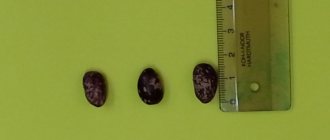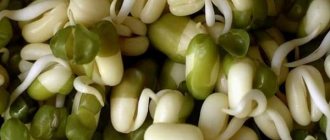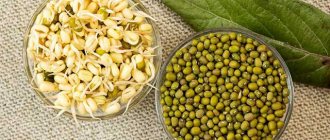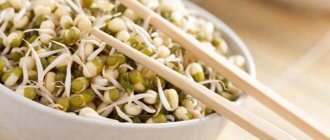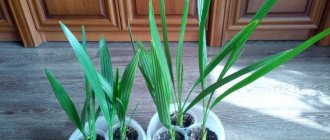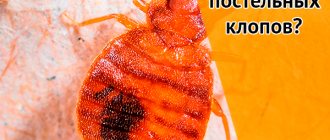How to Sprout Wheat: YouTube/Human Body How to germinate wheat? This question haunts adherents of a healthy lifestyle. Sprouted wheat is an effective dietary supplement. The active substances it contains increase a person’s resistance to stress and strengthen the immune system, which is important during a pandemic. Tips on how to sprout wheat for food will help you make the active supplement yourself.
Interesting Facts
Sprouted wheat is a natural supplement with a balanced composition that ensures maximum absorption of the product. Thus, the body immediately receives material that is ready for absorption. It does not need to break down mineral compounds, vitamins, proteins, fats and carbohydrates, since they are already in an easily digestible form. While pharmaceutical drugs burden the body, requiring the breakdown of synthetic material.
At the moment of germination, protein substances concentrated in grains break down into amino acids, and subsequently into nucleotides. In this case, starch becomes maltose, and fats are transformed into valuable fatty acids. All components that are not assimilated by the human body are re-cleaved into bases from which nucleic acids are built, which serve as material for genes. Together with these transformations, mineral compounds, vitamins, and enzymes are actively synthesized.
Interestingly, sprouting increases the amount of nutrients in grains, increasing the nutritional value of the product [2]. Thus, the fat content increases from 2.2% to 10%, protein - from 20% to 26%, fiber from 10% to 17%. At the same time, the level of carbohydrates decreases from 64% to 34%. In addition to fortifying the body, regularly eating cereal increases free energy.
Eight reasons why to eat sprouted grains:
- In terms of enzyme content, cereal is 100 times superior to fresh vegetables and fruits. These compounds are protein catalyst molecules that accelerate body functions. By consuming more essential fatty acids, vitamins, minerals and amino acids from sprouts, the body will begin to work much more efficiently.
- As wheat grains germinate, the quality of their protein increases. In particular, this concerns the amino acid lysine, which is necessary to maintain a healthy immune system and prevent the appearance of herpes.
- The amount of fiber increases. Dietary fiber helps break down fat, removes toxins and fats from the body, and promotes weight loss.
- The content of essential fatty acids in the cereal composition increases.
- The content of vitamins B, C, E increases.
- The absorption of mineral compounds is improved, since they are in an easily digestible form.
- The amount of energy reserves contained in sprouted cereal grains increases.
- Wheat sprouts alkalize the body, binding excess acid, which in 80% of cases leads to the development of diseases, in particular cancer.
Cereal grains are a common, cheap and very healthy product. They can be sprouted at home and be sure that they do not contain harmful additives or pesticides.
Such different cereals
Cereals are one of the main foodstuffs among many different peoples of the world. Rice, buckwheat, rye, barley and wheat make up a significant part of our diet. Due to established dietary traditions, most grains are prepared without taking into account their true nutritional value. For example, unpolished dark rice has much more benefits than white rice, which consumers have long been accustomed to.
The same goes for wheat. It is usually used to make flour for baking bread and sweets. Cakes, golden buns, muffins and other delicacies perfectly satisfy hunger, but do not bring anything to the body except “empty” calories. The latter provide energy for only an hour or two, after which they are deposited on the sides with unattractive fat.
The reason for the uselessness of such products is that during industrial processing, cereal grains lose all their nutritional value and vitamins. It is important for those who want to lose weight to remember this. In order for the fat to begin to melt, you need to give up any baked goods. They should be replaced with whole grain products: porridge and sprouted grains. For breakfast, it is better to eat a bowl of barley porridge than the most delicious sandwich made of white bread with a piece of ham.
Chemical composition
The highest concentration of nutrients is concentrated in grains with sprout lengths of 1-2 mm. 100 g of sprouted wheat contains 198 kcal. Proteins account for 7.5 g, fats – 1.3 g, carbohydrates – 41.4 g, water – 47.75 g, dietary fiber – 1.1 g.
The cereal does not contain sugar, which makes it attractive for people suffering from diabetes.
The energy ratio B:F:U is 15%:6%:84%. Chemical composition of sprouted wheat [3], [4]
| Name | Nutrient content per 100 g of product, mg |
| Vitamins | |
| Tocopherol (E) | 21,0 |
| Niacin (B3) | 3,087 |
| Pyridoxine (B6) | 3,0 |
| Ascorbic acid (C) | 2,6 |
| Thiamine (B1) | 2,0 |
| Pantothenic acid (B5) | 0,947 |
| Riboflavin (B2) | 0,7 |
| Folic acid (B9) | 0,038 |
| Macronutrients | |
| Phosphorus | 200,0 |
| Potassium | 169,0 |
| Magnesium | 82,0 |
| Calcium | 70,0 |
| Sodium | 16,0 |
| Microelements | |
| Copper | 261,0 |
| Iron | 2,14 |
| Manganese | 1,858 |
| Zinc | 1,65 |
| Selenium | 0,0425 |
Nutritionists recommend including sprouted grains in the diet of overweight people. The product cleanses the body, helps with bloating, constipation and diarrhea. The sprout from the seed triggers processes that stimulate metabolism and fat burning [5].
Expert opinion
Many doctors speak positively about the use of sprouted wheat grains. Although they call the product more of a general tonic than a remedy. And yet, its benefits and effectiveness cannot be denied. Thus, nutritionist, candidate of medical sciences Marina Kopytko notes that sprouted wheat grains increase the content of proteins and fiber. It not only helps cleanse the body of waste and toxins, but also normalizes the functioning of the gastrointestinal tract.
From this video you will also learn: will wheat grass help you lose weight? Their benefits and harms. How to eat sprouted wheat correctly, what beneficial substances are contained in the sprouts, what you can cook delicious.
Indications for use
Sprouted wheat grains improve metabolism and proper functioning of organs, increase immunity, improve the overall tone of the body, fill the body with energy and strength [6].
In what cases is the product useful:
- for stress, prolonged depression;
- during exhaustion, after illness;
- for disorders of sexual function and gastrointestinal tract;
- with high cholesterol levels;
- for metabolic disorders;
- in inflammatory processes [7];
- in the presence of neoplasms [1];
- with poor vision;
- in diabetes mellitus [8].
With long-term use, sprouted wheat grains have a calming effect on the nervous system, reduce blood pressure, cure impotence, and promote the resorption of polyps, fibroids, cysts, and fibroids.
Soluble fiber, which is part of the cereal, removes cholesterol and absorbs bile acids, and insoluble fiber binds and utilizes waste, radionuclides, toxins, relieves constipation, and stimulates the gastrointestinal tract [9].
The product improves metabolism, quickly satiates, suppressing hunger for a long time. Sprouted grains do not contain sugar, stabilize the function of the thyroid gland, which makes them absolutely safe for diabetics. It has been established that with regular use (50-100 g per day), they improve vision, prevent the development of cancerous tumors, promote rejuvenation of the body (strengthen teeth, nails, hair and restore elasticity and healthy complexion).
An oil is prepared from wheat germ that stimulates metabolic processes in the body and is used for cosmetic purposes to increase elasticity and even out skin texture, improve complexion, slow down aging, relieve inflammation and nourish the dermis. It has an anti-cellulite effect, accelerates hair growth, healing of wounds and skin abrasions, eliminates acne, and protects against stretch marks during pregnancy.
Oat sprouts
Taste : milky-nutty, juicy.
What they are rich in: vitamins C, E and K, calcium, iron, magnesium, silicon, chromium, zinc.
Benefits : improve intestinal microflora, strengthen the immune system and nervous system, remove bile and toxic substances; An excellent remedy for iron deficiency anemia, gastrointestinal diseases and diabetes. They help to recover faster after a stroke, with Parkinson's disease and multiple sclerosis.
How to germinate : easily and quickly. Only oats called “naked oats” are suitable for germination.
How to germinate correctly
To obtain a valuable and nutritious product, exclusively healthy grains without stains, pests and foreign impurities are used. They are first separated from the chaff and washed. To do this, pour water over the grains, knead between your fingers and drain off any floating debris. Interestingly, from one part of dry raw materials two sprouted ones are obtained. It is unacceptable to use dead, old, damaged grains. Most likely they will not sprout or will be weak and will not bring benefits to human health. For germination, use dishes made from natural materials (porcelain, clay, glass).
After washing, the raw materials are soaked for 5-8 hours, after which they are thoroughly washed under running water. The first liquid is always drained, since it releases poisons used in the process of growing wheat and formed during the activation period of the cereal before germination. During subsequent washes, do not discard the water. She's very helpful. It is used to nourish the skin when washing, watering indoor plants, and cooking. When germinating, grains are washed 3-4 times a day at equal time intervals, which eliminates the possibility of mold growth and provides the grain with fresh moisture. The product is considered ready for consumption after the sprouts reach 1-2 mm in length. Interestingly, the germination process is much more intense at night than during the day.
How to “activate” grain
Cover a deep plate with several layers of gauze, on top of which spread the pre-soaked cereal. The grains should not fit tightly together. Therefore, make sure that the thickness of the wheat layer does not exceed 5 mm. The grains are covered with gauze on top and poured with cool boiled water. The liquid should cover them slightly. Place the container in a bright, warm place, avoiding direct sunlight. Change the water periodically. Remember, the grains must be moist at all times. If there is not enough water, germination will slow down or stop; if there is too much water, the wheat will begin to mold.
The speed at which sprouts appear directly depends on the environment and the variety of cereal. As a rule, if all conditions are met, sprouts appear in 1.5-2 days.
Sprouting for treatment
For medicinal purposes, juice squeezed from green mass (grass) is used. To do this you need:
- Take a tray or pot, always with drainage holes at the bottom. Cover them with paper towels or napkins.
- Fill the containers with soil to about 5-7 cm in height.
- Spread the grains that have sprouted the first roots on the surface of the soil. You can simply use pre-soaked wheat, but then it will take a little more time.
- The grains must be laid out so that they touch, but in one layer. There is no need to leave large gaps between them.
- Water the prepared bed with water over the entire surface. Do not cover wheat with soil.
- Cover the top with paper (napkins, newspapers) folded in several layers or cloth. Moisten it well with a spray bottle.
- Raise the cover twice a day to ventilate and moisten the seeds. Keep this up for 4 days.
- After this, remove the shelter and grow for a week or 10 days in diffused light, watering once a day.
Cut the grass when it reaches 10 to 15 cm in height. It is most convenient to do this with scissors immediately before use. A second wave of greenery will soon appear in place of the cut one. For treatment, you should not try to grow a third crop: it will be tougher and not sweet.
How to eat sprouted grains
The daily norm of a “live” product is 50-100 g. Wheat grain is recommended to be consumed immediately after germination in its raw form. The cereal can be stored for no more than a day in the refrigerator. The daily portion should be eaten at breakfast so that the body receives a boost of energy for the whole day. Sprouted grains can also be eaten at lunch, but in no case at night, since the product is considered a “heavy” food that will be difficult for the body to cope with in the evening. Do not overload the gastrointestinal tract. Sprouted wheat should be thoroughly chewed or ground in a blender until a smooth paste is obtained immediately before use. The cereal is eaten as an independent dish or added to salads and cereals. It goes well with dried fruits, nuts and dairy products.
How to eat sprouted wheat?
- Kissel. Method of preparation: pass the grains through a meat grinder, add water. Boil the resulting mass for 2-3 minutes, leave for half an hour. Strain the jelly.
- Cookie. Pass dried fruits, nuts and sprouted wheat grains through a meat grinder, form into balls, and flatten on both sides. Roll the resulting healthy cutlets in poppy seeds or sesame seeds and bake in the oven for 15 minutes.
- Rejuvelac is an Italian kvass. This is a non-alcoholic drink made by fermenting sprouted grains. Rejuvelac is rich in active enzymes and beneficial bacteria that help improve digestion. To prepare the drink, 100 g of ground sprouted wheat grains are poured into 1200 ml of clean water, covered with gauze, and left for 3 days. Rejuvelac is prepared exclusively in glass containers. The finished kvass is filtered. It has a harsh and tart taste, a pale straw color, and a soft earthy aroma. The cake is used to prepare the second portion of the drink. To improve the taste, honey, salt, and spices are added to rejuvelac.
- Infusion. Used for making soups, porridges and treating respiratory diseases (together with honey). Sprouted grains (15 g) are poured with boiling water (200 ml), left for 2 hours, then simmered over low heat for 15 minutes, cooled, and filtered. Drink the resulting infusion in 150-200 ml intervals between meals.
- Wheat milk. Sprouts (200 g) are poured with clean water (800 ml), raisins and nuts are added, and blended in a blender. Use the finished milk as a cocktail and store in the refrigerator for no more than 2 days.
- Bread. Pass the sprouted grain through a meat grinder and add water. Add sauteed onions, nuts or ground seaweed into the resulting mass. Form into loaves of bread and fry in olive oil until golden brown.
The shell and germ of grains are a natural source of tocopherol, thiamine, selenium, zinc, which are deservedly called the elixir of youth. These nutrients have a beneficial effect on the reproductive system, promote the renewal of hair follicles, and healthy skin. Nutrients and antioxidants contained in sprouted grains alkalize cells, prolonging youth and preventing the growth of malignant tumors [10].
How much wheat should I take for the first time?
Wheat sprouts have a short shelf life. Therefore, the sprouts that appear must be consumed within 48 hours. There is no point in using a kilogram of wheat for 2-3 people at a time. How to germinate wheat sprouts so that you don’t throw away the excess?
Ready-made sprouts are saturated with active elements and vitamins. But their excess will not bring any benefit. Therefore, they take no more than 1 glass for 3-4 people, and since sprouts can be grown in a day, you can plant grains for germination at least every day or every other day.
Information! From 75 g of dry wheat you will get 100 g of sprouts.
And add them to smoothies, desserts, and use for vegetable salad.
Contraindications for use
According to experimental data, it has been established that sprouted cereals contain lectin proteins, which, when interacting with sugar molecules, stick together and damage the gastric mucosa, which can lead to digestive problems. In addition, these compounds have a toxic effect on the endocrine system because they can disrupt metabolism.
Harm of sprouted wheat:
- celiac disease (due to the presence of gluten in sprouted wheat grains);
- kidney diseases, gastrointestinal tract;
- children under 12 years of age;
- individual intolerance;
- postoperative period [11], [12].
Immediately after including the product in the diet, the following reactions from the body may occur: loose stools, increased gas formation, dizziness, weakness, which disappear within 3 days. If after a few days the symptoms do not go away, but on the contrary, intensify, you should immediately stop taking the cereal and consult a doctor.
Sprouted grains contain protein and fiber, which the baby’s body takes a long time to digest. It is contraindicated for children under 12 years of age, and from 13 years of age, it is introduced into the diet gradually, starting with small doses (¼ tsp). Ground grains are added to purees and porridges.
Sprouted wheat can be harmful to a healthy person only in one case, if it is treated with chemicals to increase shelf life or stored under improper conditions [13]. In addition, you should not overuse the product, as it can harm the body. The daily dose should not exceed 100 g. The introduction of a new product into the diet should begin with 15 g (1 tbsp.).
Grains with sprouts longer than 3 mm lose their healing properties, so you should not chase the length. In this case, the saying “more is better” has the opposite effect. Only high-quality, newly hatched grains with a sprout length of 1.5-2 mm, which have previously been soaked for 8-10 hours, should be eaten.
Sprout juice
According to research conducted in 1936, it was found that wheat germ juice has the maximum therapeutic effect. 30 ml of a healing drink contains the same amount of vitamins and mineral compounds as are concentrated in 1 kg of fresh vegetables. In addition, it contains lysine and tryptophan, which prevent the aging of the body and maintain healthy skin and hair.
Wheatgrass juice is a source of chlorophyll (79%), the benefits of which cannot be underestimated. The green substance contains a magnesium complex, which, in combination with tocopherol, promotes the formation of enzymes synthesized into amino acids. Subsequently, they fold and form a protein globule. In addition, chlorophyll contains ferric iron, which the human body is best able to absorb. Thus, the hematopoietic function is regulated and blood pressure returns to normal. Interestingly, the iron content of juice from young sprouts of cereal is 5 times higher than spinach.
Beneficial properties of chlorophyll:
- increases immunity;
- stimulates the formation of connective tissues, accelerating the healing of open wounds, erosions and ulcers;
- increases the body's endurance;
- blocks the transformation of healthy cells into cancerous and pathological changes in DNA molecules;
- removes toxins;
- improves intestinal function.
A characteristic feature of wheat germ juice is the presence of polysaccharides and carbohydrates combined with phenols, which act as antioxidants and adsorbents in the intestines. The discovery of the drink was the content of the enzyme superoxide dismutase, which ensures the uninterrupted functioning of internal organs during aging at the cellular level [14].
Medicinal properties of juice:
- Balances metabolism, normalizes intestinal motility.
- Increases hemoglobin production, enriches the blood with oxygen.
- Prevents tooth damage and hair loss.
- Strengthens nail plates.
- Promotes the resorption of benign and malignant neoplasms.
Juice from cereal sprouts is useful for diseases of the lymphatic, digestive, respiratory, nervous, endocrine, circulatory, excretory, thermoregulatory, reproductive, musculoskeletal, and energy systems.
Method of use
To improve immunity, it is recommended to drink 30 ml of juice per day.
To eliminate chronic diseases and restore the body of athletes and bodybuilders after intense sports, the dosage is doubled to 60 ml per day.
Without fail, freshly squeezed juice from sprouts is useful for elderly people and workers in extreme professions, pregnant women, and those with fatigue syndrome. The healing drink is prepared immediately before consumption using a screw juicer.
Wheat germ oil
Oil is a unique plant product with high biological and nutritional value [15]. To produce 250 g of valuable oil (by cold pressing), it is necessary to process over 1 ton of sprouted wheat grain. The product contains essential amino acids (leucine, valine, isoleucine, tryptophan, methionine), vitamins E, B, omega-3, a substance with a pronounced anti-inflammatory property allantoin, antioxidants octacosanol, squalene, macro- and microelements.
Wheat germ oil contains the highest amount of tocopherol compared to other vegetable oils. 100 ml of the composition contains 400 mg of “youth vitamin” E. Due to the high content of a powerful natural antioxidant, sprouted cereal oil is highly popular in the cosmetics industry. When used externally, the product softens chapped lips, improves skin tone, has an anti-cellulite effect, accelerates the healing of swelling in the corners of the mouth, nourishes dry dermis, and reduces the appearance of fine wrinkles.
Germ oil is recommended to be consumed as a dietary supplement, 15 ml per day, without heat treatment. It stops inflammatory processes in the body, exhibits wound-healing, immunostimulating, antifungal, bactericidal properties, prevents the deposition of harmful cholesterol on the walls of blood vessels, and maintains normal hormonal balance.
Application in cosmetology
Wheat germ is used to make regenerating masks for dry and aging skin, as well as strengthening compositions for hair. To prepare homemade beauty recipes, freshly hatched grains with sprouts must be ground in a blender to form a soft mixture, to which the necessary ingredients are added. To nourish dry skin, chicken yolk (1 piece), yeast (5 g), olive oil (30 ml) are additionally added to the composition. Mix the components thoroughly, apply to the face, leave until completely dry, and rinse with warm water.
To maintain the tone of aging skin, wheat germ oil is heated in a water bath, soaked in the mixture, and applied to the dermis for half an hour.
Best materials of the month
- Coronaviruses: SARS-CoV-2 (COVID-19)
- Antibiotics for the prevention and treatment of COVID-19: how effective are they?
- The most common "office" diseases
- Does vodka kill coronavirus?
- How to stay alive on our roads?
To nourish dry ends and eliminate dandruff, prepare a hair mask from the following ingredients: chicken yolks (2 pcs), olive oil (5 ml), sour cream (15 ml), cognac (25 ml), crushed wheat sprouts (50 g). Apply the product to damp, clean hair for 30 minutes and then rinse with water.
To combat cellulite, wheat germ oil (50 ml) is mixed with lavender essential oil (20 drops) and rubbed into problem areas.
